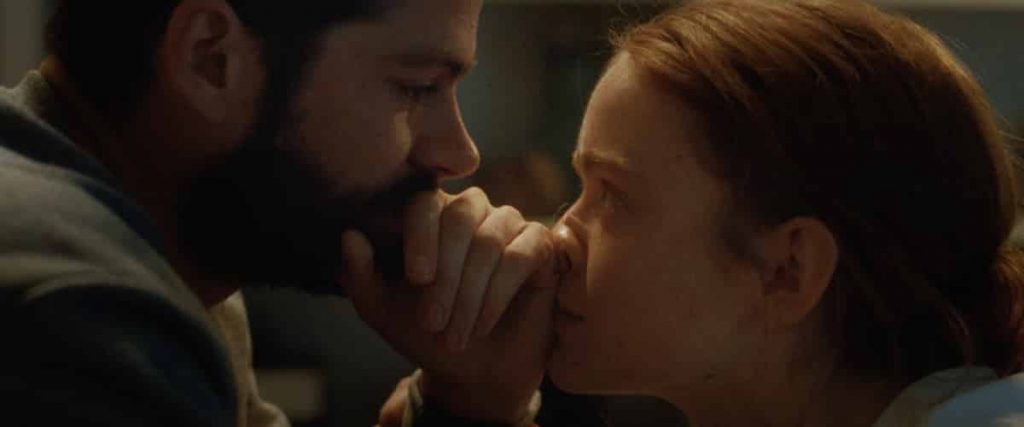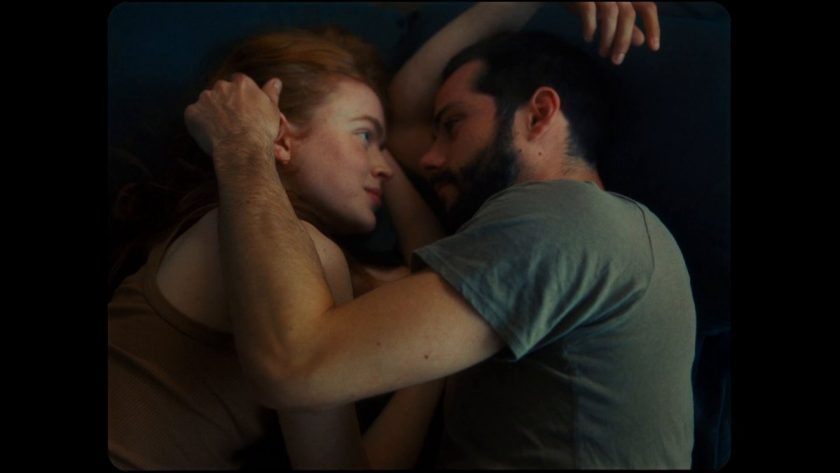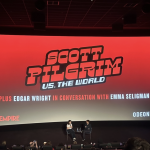Klára Kozlayová reviews the highly anticipated cinematic depiction of Taylor Swift’s All Too Well.
“Are you real?” She asks Him in the first scene.
They are together, entangled in bed, warm light bathing their skin. It’s the beginning of a short-lived love affair that lasts so long in one’s mind. It’s Her, played by nineteen-year-old Sadie Sink and Him, portrayed by Dylan O’Brien. It’s the official reclaiming of the fan-favorite song, now 10 minutes long, accompanied by a short film.
The film relies on colors and their significance to tell much of the story. Gold is Hers, bright, mellow, emitting warmth. Blue is His, icy-cold and biting. This remarkable dichotomy is reflected masterfully in the lighting – not only to light the specific characters but to also represent the state of the relationship at a given moment. For instance, the first few scenes of the film are all engulfed by warm, pleasant colors. As She hesitantly walks into His sister’s house, the surroundings are luminous. Sunlight is streaming through the turquoise stained glass, representing Her entry into His life, as if melting some of the coldness of Him by Her joyous presence.
Autumn holds great importance throughout this film, as that is the season that marks the beginning, as well as the end of the relationship. It’s almost as if it is the other protagonist in the short film – we can feel the cold, brisk air, the crunch of leaves underfoot, the lingering comfort of a favourite sweater, the flickering fairy lights above the bed as the world grows dark. There is great pleasure to be derived from beautiful visuals alone – perhaps a kind of aesthetic hedonism along with the feeling of consolation through art. Simply, the film is meant to be experienced with a cup of tea warming the hands, by the fireplace, with rain pattering on the windows.

The only moment in the film when the music stops, we hear the creaking of a fork against a plate and we dive into a full-fledged dramatic scene. This is where Sadie Sink and Dylan O’Brien are free to show off their acting skills – an explosive argument in the kitchen after a dinner party. As it unfolds, a sense of indignation rises in the viewer – on Her part. He makes flagrant claims, He gaslights, He apologizes without meaning it. “I don’t think I’m making you feel that way, I think you’re making yourself feel that way.” The camera is moving unsteadily to accent the realism and emotionally fragile nature of the scene. We feel in the moment with the two, while still looking from the outside in – watching in disbelief as She accepts His half-hearted sorries.
A new colour, red, is introduced when Taylor Swift herself appears on screen. She is portraying Her, 13 years later, getting ready for a book reading event. The experience of the all-consuming pain has been turned into a story that brings comfort to others – Her experience of suffering transformed. The Red light here replaces the gold hue of her past as she turns the yellow lights off in the hallway. Her “wide eyed gaze” is gone, but the passion and the righteous anger turned into a work of art is what is gained. What remains is the blue glow, however, as she walks onto the stage, mirroring sorrow of a lost connection that always stays, somewhere in a secret drawer of the heart.
All too well is a journey through memories, dichotomous and frantic in its recollections. The very best is mixed up with the very worst, the dreams and hopes of a person clashing with their startling reality. As the song comes to a close and the snow falls slowly, dust is not allowed to settle on the old love affair. “I was there, I was there” Taylor Swift sings repeatedly, and we can’t help but get the feeling that we had been there as well.
Watch All Too Well here:




such a brilliant review !!